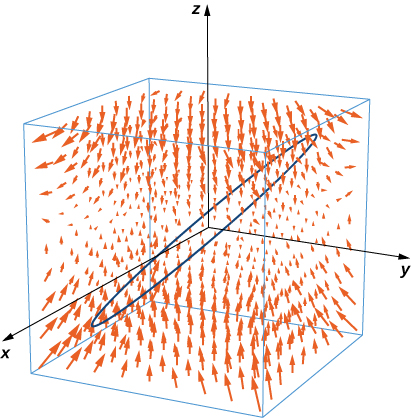| << Chapter < Page | Chapter >> Page > |
Calculate the curl of electric field E if the corresponding magnetic field is
Notice that the curl of the electric field does not change over time, although the magnetic field does change over time.
For the following exercises, without using Stokes’ theorem, calculate directly both the flux of over the given surface and the circulation integral around its boundary, assuming all are oriented clockwise.
S is the first-octant portion of plane
S is hemisphere
S is a triangular region with vertices (3, 0, 0), (0, 3/2, 0), and (0, 0, 3).
For the following exercises, use Stokes’ theorem to evaluate for the vector fields and surface.
and S is the surface of the cube except for the face where and using the outward unit normal vector.
and C is the intersection of paraboloid and plane and using the outward normal vector.
and C is the intersection of sphere with plane and using the outward normal vector
Use Stokes’ theorem to evaluate where C is the curve given by traversed in the direction of increasing t .

[T] Use a computer algebraic system (CAS) and Stokes’ theorem to approximate line integral where C is the intersection of plane and surface traversed counterclockwise viewed from the origin.
[T] Use a CAS and Stokes’ theorem to approximate line integral where C is the intersection of the xy -plane and hemisphere traversed counterclockwise viewed from the top—that is, from the positive z -axis toward the xy -plane.
[T] Use a CAS and Stokes’ theorem to approximate line integral where C is a triangle with vertices and oriented counterclockwise.
Use Stokes’ theorem to evaluate where and S is half of sphere oriented out toward the positive x -axis.

Notification Switch
Would you like to follow the 'Calculus volume 3' conversation and receive update notifications?